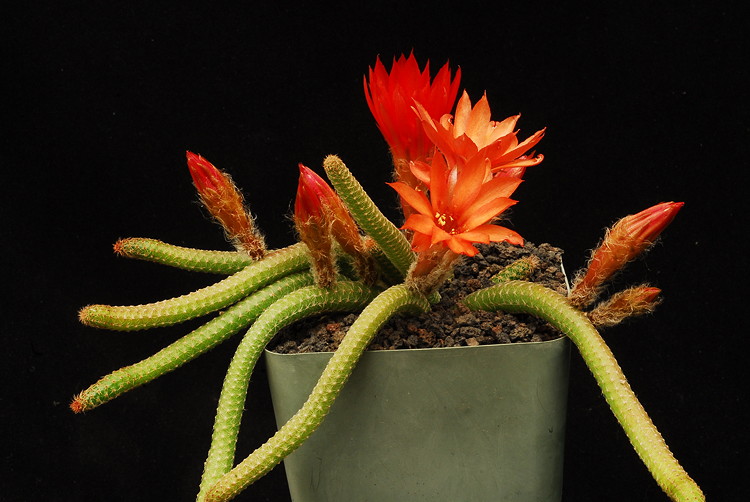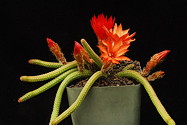This recently described (Lodé, 2018 (2): 2 - 7, Cactus-Aventures) relative of the peanut cactus, C. silvestrii, was discovered by Bolivian nurseryman Luis Ramirez Pinto (1954 – 2011), of Ramirez Brothers Cacti, in 2004. While the species spans the Bolivia – Argentina border, the Bolivian collection is offered here: Luis Ramirez s.n., Bolivia; Tarija; between Mecoya and Capilla de Bermejo, between 800 and 2300 m. It was originally mistaken for an Aporocactus, but those are Mexican in origin and produce zygomorphic flowers. Its ease of propagation, both by vegetative means and seed produced by crossing of the Argentine and Bolivian clones, assures its establishment in cultivation. Its 9 – 10-ribbed stems are longer (to 50 cm long) and more slender so are therefore, pendent, unlike the shorter, erect stems of C. sylvestrii. It has proven hardy to -10°C. Rooted cuts of HBG 140839. $10.

Published in the Cactus and Succulent Journal, Vol. 96 (2), Summer 2024


